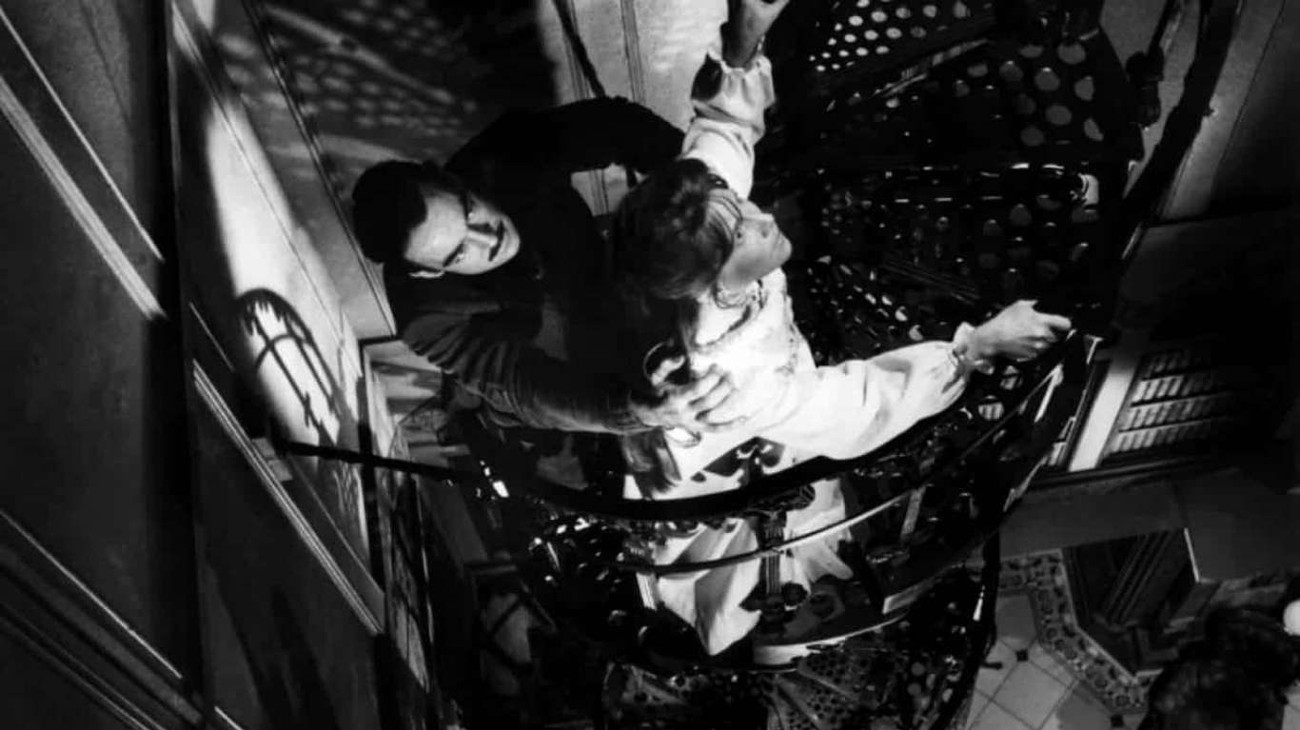Have you ever felt a chill run down your spine in an empty room? Or sensed an unseen presence lurking in the shadows? For many, these experiences evoke a primal fear of the unknown, a fear that has been expertly captured in the iconic horror film, The Haunting of Hill House (1963). This chilling adaptation of Shirley Jackson’s seminal novel has haunted audiences for decades, and for good reason. It doesn’t rely on cheap jump scares or gratuitous gore to evoke terror; instead, it delves into the subtle, insidious nature of fear, planting seeds of dread that grow with each passing moment. If you’re seeking a cinematic experience that will truly unnerv you, look no further than the chilling world of Hill House.

Image: bandsaboutmovies.com
The story follows a group of paranormal investigators, a doctor, a psychologist, and a clairvoyant, who gather at the infamous Hill House, a mansion shrouded in darkness and whispers of tragedy. Their mission? To scientifically prove the existence of ghosts and other supernatural phenomena. The setting itself, with its decaying grandeur and eerie silence, provides a constant backdrop of unease. As the investigators delve deeper into Hill House’s mysteries, they become entangled in a web of paranormal activity that threatens their sanity and sanity. What starts as a scientific inquiry soon morphs into a terrifying descent into the depths of human fear, where the line between reality and delusion blurs, leaving the audience questioning what’s real and what’s a figment of their own imagination.
A Haunting Atmosphere That Stays With You:
The 1963 adaptation of The Haunting of Hill House is a masterpiece of atmospheric horror. Director Robert Wise, known for his work on classics like The Sound of Music, masterfully uses the film’s black-and-white cinematography to create a sense of claustrophobia and dread. The long, lingering shots of the house’s darkened corridors and shadowy figures evoke a sense of foreboding that lingers long after the credits roll. The sound design is equally effective, with creaking floorboards, whispering voices, and sudden bursts of silence adding to the film’s palpable tension. Every flicker of light, every creak of the house, becomes a potential harbinger of terror.
Psychological Horror at its Finest:
The Haunting of Hill House is not simply a ghost story; it’s a chilling exploration of the human psyche. The film delves into the characters’ past trauma and repressed memories, revealing how their fears and insecurities are manifested in the terrifying events unfolding around them. The film suggests that the house is not simply haunted by ghosts but by the darkness that resides within each of the characters. It’s a haunting reminder of the power of the mind to create its own nightmares.
Exploring the Paranormal Without Exploiting It:
While The Haunting of Hill House plays on our deepest fears of the unknown, it does so in a way that is both respectful and thought-provoking. It’s a film that encourages viewers to confront their own fears and insecurities, recognizing that the most terrifying monsters often lurk within ourselves. This is part of what makes this film so enduring and powerful. It’s not just a story about ghosts; it’s a story about the human condition, and the enduring power of our darkest fears.
More Than Just a Horror Film:
The Haunting of Hill House offers much more than mere scares; it’s a haunting meditation on loss, grief, and the fragility of the human mind. The film explores the idea that the ghosts we fear may not be spectral entities, but rather the ghosts of our own past, the memories that haunt us and shape our present.
The Legacy of a Classic:
The Haunting of Hill House (1963) has become a cornerstone of the horror genre, inspiring countless adaptations, remakes, and sequels. Its influence can be seen in everything from contemporary horror films to gothic novels. Its lasting impact is due to its ability to tap into our deepest fears, its masterful use of atmosphere and suspense, and its insightful exploration of the human psyche.
Beyond the Silver Screen:
If you’re captivated by The Haunting of Hill House (1963), consider delving deeper into its source material. Shirley Jackson’s novel is just as chilling and evocative as the film, offering a more nuanced and expansive exploration of Hill House’s dark history and the psychological toll it takes on its inhabitants. You may also find yourself drawn to other classic works of gothic horror, such as Henry James’ The Turn of the Screw or Edgar Allan Poe’s The Fall of the House of Usher. These works explore themes of fear, isolation, and the power of the supernatural that are timeless and universal.
Experience the Haunting Yourself:
The Haunting of Hill House (1963) remains a chilling and unforgettable cinematic experience. It’s not a film for the faint of heart, but for those seeking a truly immersive and psychologically disturbing horror experience, it’s a must-watch. Allow yourself to be transported to the eerie world of Hill House, where reality and terror dance in the shadows. Let the film’s haunting atmosphere and chilling performances linger in your mind long after the credits roll. Prepare to be haunted.

Image: www.alternateending.com
The Haunting Of Hill House 1963 Full Movie





